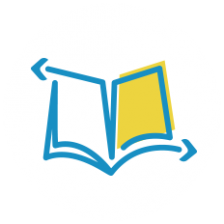Even though RTI teaching strategies and interventions are widely used, it is estimated that between 15 and 30 percent of students struggle to learn due to psychosocial problems which affect attention to and retention of material. For these students, as well as for all those in their classrooms, positive behavior support (PBS) is crucial to success.
Just like the academic RTI framework, the framework for PBS has three levels. The first level is a positive school and classroom behavior plan. A school may use a program like CHAMPs, which is a school-wide, positive classroom management plan. In this plan, all classrooms share the same rules and consequences.
Tier Two Behavioral Interventions
When students don’t respond to proactive classroom management, they receive interventions associated with the second level of RTI, such as small group instruction in anger management, social interaction skills, how to follow directions or other needed skills to help them be successful in the classroom. You can also change the seating arrangement and proximity to peers who negatively influence a student, as well as seek help from other teachers, school counselors or parents. If a student does not respond to PBS interventions from level two of the RTI framework, the RTI team will assign more personal and individual behavioral interventions.
When disruptions occur at this level, the teacher records the behavior and its effect on learning using concrete, specific, non-emotional terms; he or she also records details surrounding the behavior, such as the time, the subject being taught, the learning activity and its difficulty, the location of the student in the classroom and nearby peers or other adults. Be sure to record what happened before the disruption, during the disruption and after the disruption as all three can supply clues which can help you successfully intervene. You are looking for a trigger (what started the disruption) so that you can address it in the small group.
There are several types of events that can trigger students to disrupt. For example, a student may be unable to answer a question or complete work and, as a result, may act out in frustration; this behavior can be addressed through an intervention. As you continue to watch the student’s behavior and record the cycle of disruption, you gather the data that will be necessary to complete a functional behavioral analysis (FBA), which is used if the behavior continues.
Although a large part of PBS is teaching the student new skills to increase appropriate behavior, there are times when a student’s behavior needs immediate attention or when he or she needs to be removed from the classroom. If the behavior is escalating or influencing other students, the class is unable to learn or safety is threatened, it is time to involve administrative personnel. You can always work with the student later to help him or her learn how to deal with whatever is triggering the behavior, but sometimes, removal is the only option to allow other students to continue learning.
Understanding the Increase in Emotional and Behavioral Disturbances
Schools have seen an upsurge in the number of students with emotional or behavioral disturbance (EBD); however, as is the case with academic interventions, a student is not placed in a special education program just because he or she is receiving behavioral interventions from level three. Students in special education programs with an emotional or behavioral issue will have a behavioral intervention plan (BIP), but they are far from the only ones receiving behavioral interventions.
The upsurge in the number of EBDs could be due in part to how we define them. Not all emotional or behavioral disturbances are long term; sometimes symptoms only last a short while, such as is often the case when a student is depressed after losing a loved one or when his or her parents are divorcing. An outburst from a grieving student might be considered disruptive; if the behavior continues, it is important to assign that student to interventions from level two of the RTI framework or even send the student to the school counselor for individual help if the disturbance is ongoing. Dealing effectively with students with EBD, in whatever form it occurs, is crucial, especially given the growing concerns of educators and parents about school shootings.
De-escalating the Cycle of Disruption
A cycle of disruption, tantrums and meltdowns can be common, given the stresses that are placed upon students who may have psychosocial or learning disorders, and knowing how to effectively recognize and de-escalate this cycle is crucial. First, understand that aggression leads to aggression, and that responding with frustration will only make the situation worse. Putting distance between yourself and a student who is building up to a behavioral eruption can help to reduce conflict. You can do this verbally; for example, if Patty is making noises while you are going over answers to a quiz, you could say, “Patty, I’ll get back to you in just a minute. George, what do you have for number three?” Circle back around to Patty privately and see if she will communicate with you. Of course, unless a student has a very good reason for his or her disruptive behavior, you will need to follow your discipline plan to maintain consistency in the classroom. When you do, don’t take a student’s behavior personally, and be as matter-of-fact as possible.
If the student is escalating toward an eruption, you may be able to verbally de-escalate him or her. For example, you could do this by changing the subject, listening and empathizing, setting limits (such as re-stating the classroom rules), giving a choice or distracting the student by getting him or her to focus on something else.
Especially for students with chronic or severe behavioral problems, it is helpful to recognize the steps leading up to an outburst so that you can take preventative measures. First, there is the calm stage. In this stage, students are doing what they are supposed to be doing. In the next stage, a trigger has set off the behavior. The student may demonstrate some agitation, murmuring, tapping or engaging in other excessive movement. If you can determine what the trigger was and intervene at this point, an outburst may be avoided. You may be able to break the cycle before it starts by using the verbal de-escalation techniques above, moving closer to the student without talking to him or her or having the student move by asking him or her to run an errand or complete a task, such as sharpen your pencil.
The next stage is acceleration or escalation. Here, the student engages others in the outburst. He or she may question loudly, make inappropriate comments, argue, provoke or defy. When this happens, it is very easy to feel that you are losing control and that it is a reflection on you and your abilities as a teacher. Let go of that and focus on de-escalating the student’s behavior. Assure yourself that you will discipline the student, if appropriate, when they calm down; in the meantime, you need to remain calm, keep your voice low and even and resist the urge to respond in frustration. Put distance between yourself and the student by walking to another part of the classroom, by doing something else or by verbally pausing. This shows that you are still calm and in control.
If none of these strategies are successful in de-escalating the behavior, the student may enter into the next stage in which the behavior peaks and the student may act in rage. This is the time to ensure everyone’s safety, including the student in the rage. Contact the appropriate help from outside of the classroom so the student can be separated from the class.
After the peak stage has passed, the student should be calm again. He or she may even be sleepy. Repetitive work can be calming at this point and the best way to help students overcome the effects of the recent outburst.






